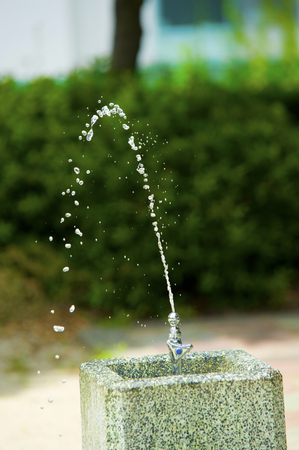Understanding Feng Shui Principles for Water Features
Feng Shui, an ancient Chinese art of spatial arrangement, is deeply rooted in the philosophy of harmonising environments to foster health, prosperity, and wellbeing. Central to its practice is the careful consideration of natural elements, with water holding a position of particular importance. In Feng Shui, water symbolises abundance, flow, and renewal. Its presence is believed to attract positive energy—known as qi—and promote balance within a living space. While these traditions originate from Eastern thought, their underlying principles can be thoughtfully adapted to English lawns and gardens. By recognising waters role as both a visual and energetic focal point, British homeowners can integrate features such as ponds, fountains, or reflective pools in a manner that respects local aesthetics while embracing the timeless wisdom of Feng Shui. This fusion not only enhances the beauty of an English lawn but also introduces a sense of tranquility and purposeful design that resonates with both tradition and contemporary garden culture.
2. The Role of Lawns in British Gardening Culture
English lawns have long stood as a symbol of refinement and tranquillity, forming the verdant heart of British gardens from stately homes to suburban retreats. Their tradition stretches back centuries, embodying not only aesthetic ideals but also social values such as orderliness, hospitality, and respect for nature’s rhythm. This deep-rooted appreciation informs how water features are thoughtfully integrated into lawn spaces, especially when blending Feng Shui principles with quintessentially British sensibilities.
Climatic and Cultural Considerations
Britain’s temperate climate—with its reliable rainfall and moderate seasonal changes—shapes both the appearance and maintenance of English lawns. Unlike Mediterranean or arid landscapes, British grass remains lush for much of the year, providing a soft canvas upon which water features can be artfully arranged. However, excess moisture can be an issue; thus, integrating water elements requires careful planning to avoid waterlogging or disrupting lawn health.
Tradition Meets Modern Interpretation
While traditional English gardens favour naturalistic ponds or gentle streams, contemporary designs often incorporate Feng Shui-inspired water features such as reflective pools or bubbling fountains. These must harmonise with the inherent character of the lawn—never overwhelming its subtle charm but instead enhancing its serenity. The following table outlines key considerations when introducing water features into English lawns:
| Aspect | Traditional English Approach | Feng Shui Integration |
|---|---|---|
| Lawn Layout | Open expanses with curved edges | Flowing shapes to encourage chi movement |
| Water Feature Style | Ponds, rills, naturalistic streams | Reflective surfaces, strategic placement for energy balance |
| Climate Adaptation | Tolerates wet conditions but avoids stagnation | Clever drainage and positioning to maintain harmony |
| Cultural Symbolism | Status and leisure reflected in manicured lawns | Focus on health, prosperity, and calm through water placement |
The interplay between tradition and innovation ensures that English lawns remain not only visually appealing but also spiritually enriching when incorporating Feng Shui principles. By respecting both the unique environmental context and cultural heritage of British gardening, water features become more than mere ornaments—they serve as conduits for wellbeing and timeless elegance.
![]()
3. Planning and Placement of Water Features
Incorporating water features into English lawns according to Feng Shui principles requires thoughtful planning and a keen understanding of both traditional wisdom and local garden aesthetics. The positioning of ponds, fountains, or gentle streams is not only an exercise in beauty but also in harnessing the natural flow of energy—Qi—for prosperity and harmony.
Optimal Locations for Water Features
Feng Shui suggests that water represents wealth and abundance; thus, its placement is crucial. Traditionally, the south-east sector of a garden is considered most auspicious for water features, as this area relates to prosperity. However, British gardens often come with their own unique layouts, such as rectangular lawns bordered by perennial beds or winding pathways. It is therefore advisable to align the water feature so that it complements these existing structures while still honouring Feng Shui guidance.
Orientation and Flow
The direction of water flow plays a vital role in channelling positive Qi. For English lawns, position streams or fountain cascades so that they flow gently towards the home or main gathering space—symbolising wealth arriving rather than departing. Avoid placing water features at the very centre of a lawn or directly opposite the front door, as this can disrupt the balance of energies. Instead, let the feature nestle into a corner or curve, creating a natural focal point without overwhelming the landscape.
Harmonising Tradition with Modern British Gardens
While Feng Shui offers clear guidelines, it is important to respect local British gardening traditions—such as preserving sight lines across manicured lawns or maintaining open spaces for gatherings. Choose water features with materials like natural stone or aged copper to echo classic English styles. Integrate native aquatic plants around ponds to blend seamlessly with traditional borders, ensuring the overall design feels both intentional and harmonious.
By thoughtfully considering both Feng Shui wisdom and the cherished elements of British garden design, you can create a tranquil and prosperous outdoor retreat that honours ancient philosophy while celebrating local character.
4. Design Choices: Traditional and Modern Water Features
When considering the integration of water features in English lawns according to Feng Shui, it is essential to examine both traditional and modern design approaches. Classical Chinese water features often include koi ponds, gently flowing streams, or stone basins, all designed with an emphasis on harmony, balance, and the gentle movement of water—an embodiment of yin-yang philosophy. In contrast, contemporary British gardens may favour sleek rills, reflective pools, or even minimalist fountains that provide a subtle nod to nature while showcasing clean lines and innovative materials.
Comparing Classical and Contemporary Designs
| Design Style | Key Characteristics | Feng Shui Elements | British Aesthetic Integration |
|---|---|---|---|
| Traditional (Chinese) | Curved edges, natural stones, koi fish, bamboo spouts | Emphasises flow and movement; placement for energy circulation | Can be adapted with native British plants and rustic stonework |
| Modern (British) | Sleek surfaces, geometric shapes, glass or metal finishes | Focuses on clarity and reflection; stillness for contemplation | Merges with formal lawns, clipped hedges, and minimalistic layouts |
Merging Chinese Philosophy with British Aesthetics
The challenge—and opportunity—lies in harmoniously blending these philosophies. For instance, a traditional pond can be framed by classic English box hedging, while a contemporary water wall might incorporate elements like river stones or willow branches to reflect natural balance. The colour palette can also bridge the two traditions: muted greys and greens popular in British gardens pair seamlessly with the subtle earth tones favoured in Feng Shui landscaping.
Practical Tips for Integration
- Select Materials Wisely: Combine local Cotswold stone or Yorkstone with traditional Oriental ornaments for a balanced look.
- Plant Selection: Use British native aquatic plants such as water forget-me-nots alongside bamboo or lotus for authenticity and ecological benefit.
- Positioning: Follow Feng Shui principles by placing water features in the east or southeast corner of the lawn to attract positive energy while ensuring visibility from key viewpoints within the garden—a hallmark of British design.
The Result: A Garden of Balance
This thoughtful fusion creates outdoor spaces that are not only visually appealing but also spiritually uplifting—a true marriage of East and West in the heart of an English landscape.
5. Practical Considerations and Local Regulations
When integrating water features into English lawns with Feng Shui principles in mind, it is essential to balance aesthetic aspirations with practical realities and legal requirements. Plumbing forms the backbone of any successful water feature installation. It is advisable to engage a qualified plumber familiar with both contemporary British systems and the nuances of garden design. This ensures that your water feature—whether a pond, fountain, or stream—has a reliable supply and drainage system that prevents leaks or flooding, while maintaining optimal water flow as recommended by Feng Shui.
Maintenance is another crucial factor. English weather, with its mix of rain and seasonal changes, means regular upkeep is vital for preventing algae build-up, debris accumulation, or mechanical failures in pumps and filters. Choosing hardy aquatic plants native to the UK not only aligns with ecological best practices but also simplifies maintenance routines. Routine checks should be scheduled to keep the water clear and harmonious, thus supporting both environmental health and positive Qi flow according to Feng Shui doctrine.
Compliance with local bylaws and ecological standards cannot be overstated. UK-specific legislation such as the Water Resources Act 1991 and guidelines from local councils regulate pond construction, drainage, and water usage. For example, if your property lies within a conservation area or you are creating a large pond, planning permission may be required. Furthermore, the use of chemicals for cleaning or pest control must adhere to environmental protection standards to safeguard local wildlife and waterways.
It is also prudent to check for restrictions on water abstraction during drought periods or hosepipe bans—common in certain regions of England—which could affect the operation of fountains or cascades. Engaging with your local council or seeking advice from organisations like the Royal Horticultural Society (RHS) can ensure all interventions are both legal and environmentally responsible.
Ultimately, careful planning that respects plumbing logistics, ongoing maintenance demands, and stringent UK regulatory frameworks will result in a water feature that not only enhances your lawn’s Feng Shui but also stands as a sustainable, compliant addition to your English garden.
6. Enhancing Wellbeing and Visual Appeal
Water features, when thoughtfully integrated into English lawns with Feng Shui principles in mind, offer a range of tangible and intangible benefits that extend well beyond mere aesthetics. The gentle sound of flowing water has a calming effect, helping to reduce stress and promote mental wellbeing for those who spend time in the garden. This sense of tranquillity is deeply valued in British culture, where outdoor spaces often serve as personal retreats from the bustle of daily life.
Beyond individual benefits, water features create focal points that draw people together, fostering a sense of community. Whether it’s neighbours pausing for a chat by a pond or families gathering around a decorative fountain, these features encourage social interaction and strengthen local ties—a cherished aspect of British communal living.
Visually, water elements add depth and movement to otherwise static landscapes. Reflecting light in ever-changing patterns, they enhance the lawn’s appeal throughout the seasons. In spring and summer, they attract birds and pollinators; in autumn and winter, their presence brings life even as other plants recede. Such dynamic beauty aligns with the British appreciation for gardens that evolve and delight year-round.
Moreover, according to Feng Shui wisdom, water represents prosperity and abundance. Strategically placed water features are believed to invite positive energy (qi) into the home environment. By combining this ancient philosophy with the traditional English garden aesthetic, homeowners can cultivate spaces that feel harmonious and inviting—a perfect balance of old-world charm and contemporary wellbeing.
Ultimately, integrating water features guided by Feng Shui not only enhances visual charm but also cultivates atmospheres of serenity and connection. These multifaceted benefits make them an enriching addition to any English lawn, supporting both personal health and community spirit.


